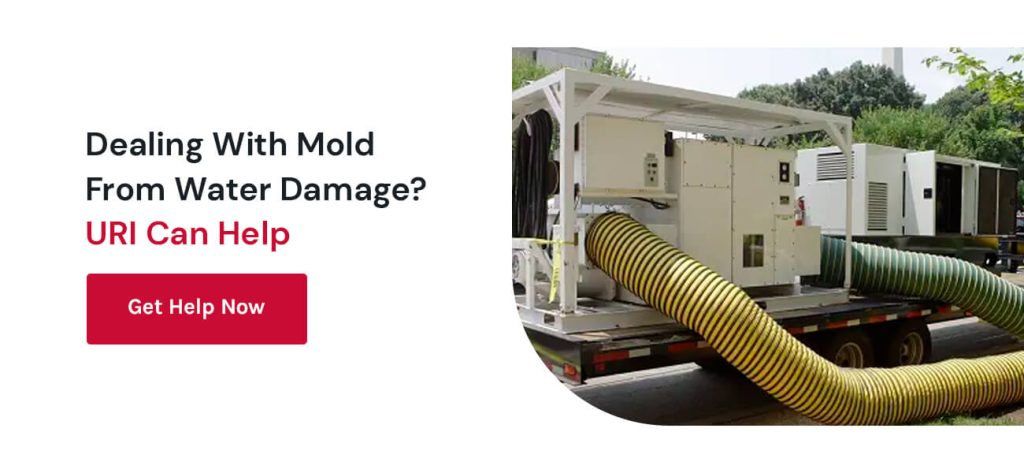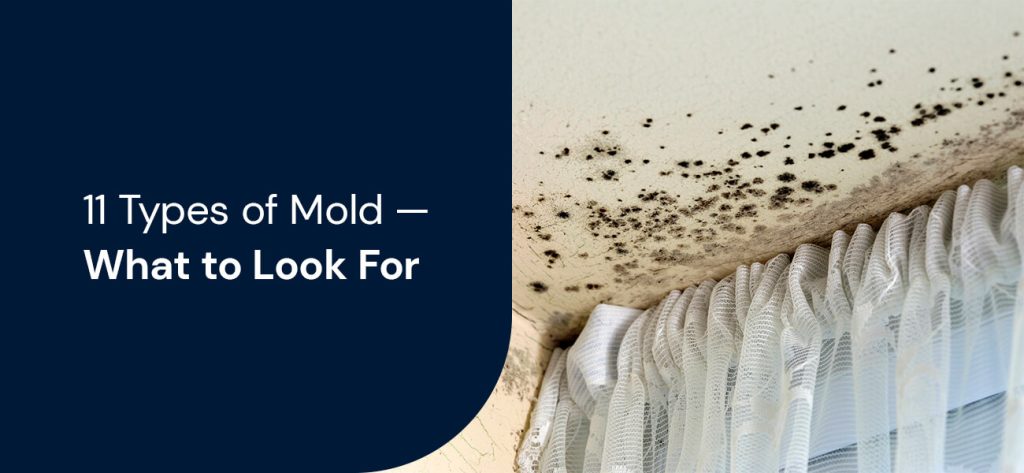
Mold growth at your business can have several causes, from weather conditions to recent water damage. Mold can cause companies to close temporarily to treat the problem and address damages. Understanding the signs of mold, the different mold types and preventing mold growth can help you mitigate its effects and protect your company.
Mold is a fungus that grows in moist, humid areas around your business. The fungus produces spores, which allow mold to form and spread when it comes into contact with moisture or materials in the right conditions. You can often find mold spores in damp spaces of buildings, such as bathrooms, basements, HVAC units and between walls.
Mold relies on access to materials it can use as food. Many look for organic materials, such as wood or paper, but others can survive on the dirt and dust that builds up on synthetic materials like grout, glass, plastic, concrete and metal. Exposure to mold on wood can cause the material to rot, making it dangerous to work.
Many molds cause illnesses or symptoms. Some people can have mold allergies, causing them to sneeze and cough frequently in the presence of mold. Some mold types are toxic and may cause severe health problems for your employees.
If you are worried your business might have mold growing somewhere, you can rest easier knowing there are some ways you can check:
Check common areas where mold grows as part of a routine inspection. Carefully monitor spaces that have experienced water damage and flooding to catch mold growth in its early stages.
While some mold is safe to ingest in foods and antibiotics, other molds are dangerous and hazardous to our health and safety. Three categories of mold and their risks are:
Many molds cause specific symptoms or have very particular appearances Many only grow under unique conditions — if you suspect you have mold, knowing the types can help you determine where to search to find the source and what to look for.
Also called black or toxic mold, Stachybotrys is a toxigenic type mold with a black or dark green appearance and slimy texture. It often looks similar to other mold types, so you will need to have it tested to determine fully if you are dealing with black mold at your location. This type of mold can survive in many environments, but it does well in warmer, darker spaces. You might find this mold in bathrooms or walls, as it can grow on wood and drywall.
Stachybotrys creates dangerous mycotoxins particles to break down its food sources. Breathing in mycotoxins can cause severe health problems, including:
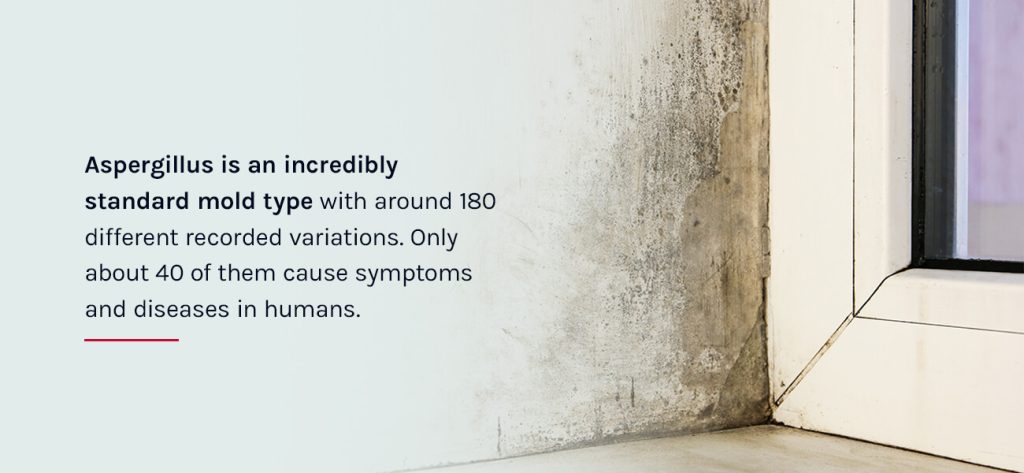
Aspergillus is an incredibly standard mold type with around 180 different recorded variations. Only about 40 of them cause symptoms and diseases in humans. Because of its diversity, you will need to test it to tell you which specific variation you are dealing with.
This mold is allergenic, and inhaling the spores can lead to aspergillosis. Depending on the type of Aspergillus, you can develop:
Cladosporium is an allergenic mold that appears green and brown. You can often find it in various spaces around your business, from fabric materials like upholstered furniture and carpets to under the sinks and in cabinets. It thrives in humid areas, like bathrooms, so monitoring humidity levels can help determine if you are at risk of developing this type of mold. Because Cladosporium can form indoors and outdoors, employees may bring spores into your business from the outdoors on their clothes.
Like many other allergenic mold types, individuals exposed to Cladosporium can experience a runny nose, sore throat, sneezing, coughing and asthma attacks. People with asthma and mold allergies might have worse symptoms than those without.
Many people can recognize Mucormycetes on their produce as it goes bad. It has a distinct white and fuzzy gray appearance with long fibers that form on fruits and vegetables in the summer and fall when it is warmer. As it grows, the mold becomes darker gray. It can also form in places around your business, especially near air conditioning units and vents with a lot of moisture and darkness.
As an allergenic mold type, inhaling Mucormycetes can cause problems in the sinuses and lungs. You might experience headaches, congestion, coughing and a fever. However, Mucormycetes exposure can lead to more dangerous issues, so look out for shortness of breath, chest pain and nose or mouth lesions.
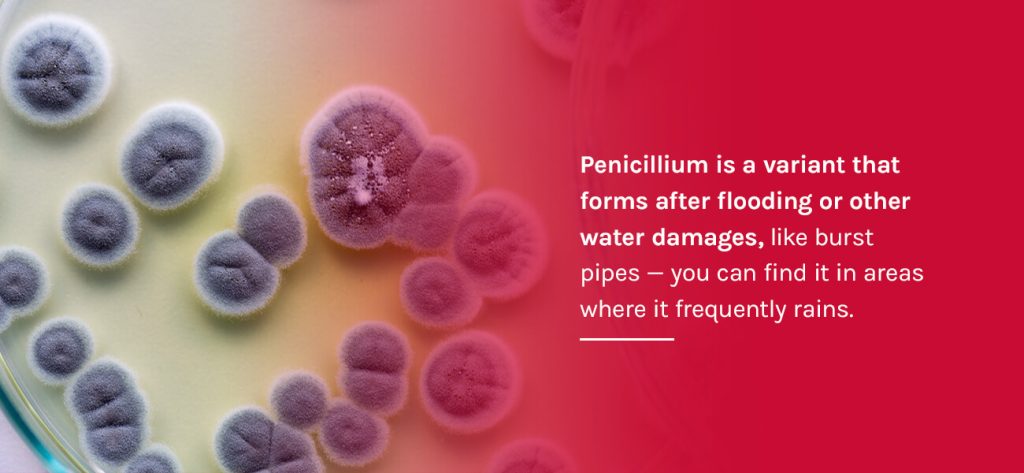
Penicillium is an allergenic and pathogenic variant of a prevalent mold. You can find traces of it in many foods, and if you’ve ever taken Penicillin for a cold, you’ve also encountered it before.
Penicillium is a variant that forms after flooding or other water damages, like burst pipes — you can find it in areas where it frequently rains. It has blue and green coloring, and many describe its texture as velvety.
Penicillium has many different variants, some producing mycotoxins, categorizing it as toxigenic. Inhaling Penicillium spores can cause problems breathing, damage organs and even lead to some cancers.
Fusarium is a unique mold you might encounter at your company property. While most molds thrive in warm, humid spaces, Fusarium can survive in colder environments. It prefers softer materials, including:
It appears as red and pink spots, making it easy to identify. This type falls under the allergenic and toxigenic categories. While the allergenic symptoms are typical of those from colds and allergies, toxigenic variations might present as more severe. Fusarium mycotoxins can cause internal bleeding and nervous system disorders.
Alternaria is an allergenic mold type that can cause asthma symptoms and breathing problems in those exposed to the spores. It grows well in places exposed to moisture, like the spaces underneath sinks. Many people describe it as looking similar to brown hair. Alternaria can grow very quickly, so it is best to treat it as soon as you notice it.
Aureobasidium Pullulans mold is common on wooden walls and under wallpaper, but it can also grow on synthetic materials like paint and tile grout. It starts out pink and gray and transforms to brown and black as it matures. It can look very similar to black mold, but testing it can determine which one you are dealing with.
This mold type is allergenic and can irritate the skin if you touch it, so it is best to steer clear. Expect common allergy symptoms, like watery eyes and frequent sneezing.
This allergenic and pathogenic mold loves dark, humid spaces. It is common after flooding or water damage, but even a little moisture can cause these spores to grow behind your walls — you might find this mold goes undetected until it spreads to the wall’s exterior.
Allergenic symptoms include runny noses, sneezing and watering eyes, and observing these symptoms can help determine if Chaetomium is present at your workplace. Pathogenic causes can consist of more serious respiratory diseases.
Like Penicillin and Aspergillus, Ulocladium comes in many strains. You can commonly find it coexisting alongside other molds. You will likely have it after some water damage or flooding because it requires a constant water supply to survive — while other molds just need some moisture in the air or the surface where they are growing, Ulocladium can dry out if there isn’t enough water.
Ulocladium is allergenic and pathogenic. Pathogenic symptoms can cause eye or skin infections, and it is dangerous to people who have had chemotherapy or an organ transplant.
Trichoderma is an allergenic and toxigenic mold with a puffy white and green appearance. It can grow rapidly and releases an enzyme that causes wood to rot, further damaging your business’s space.
Some Trichoderma strains are toxigenic, while others are allergenic. Mycotoxins produced by this mold type can cause liver and kidney problems, lung infections, nervous system problems and even some types of cancer.
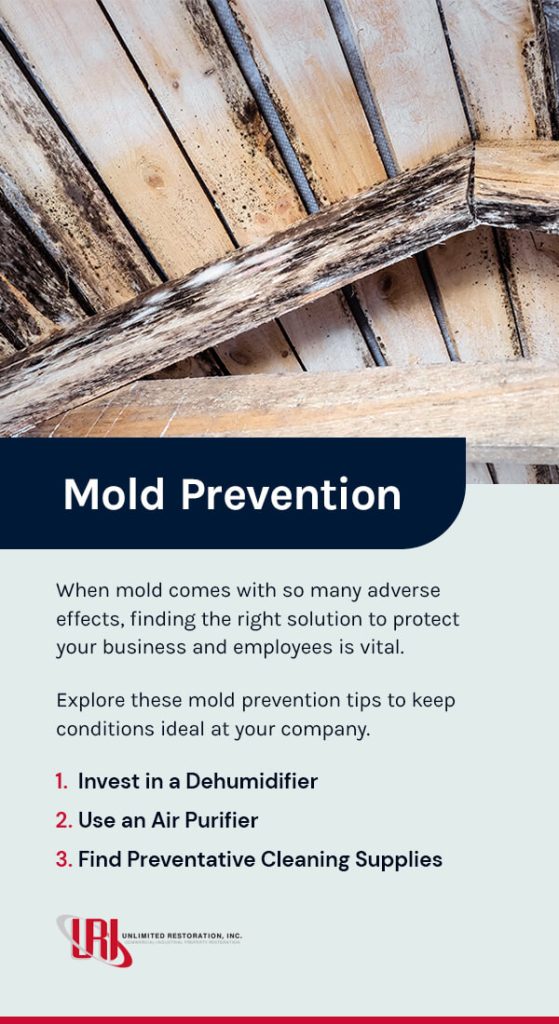
When mold comes with so many adverse effects, finding the right solution to protect your business and employees is vital. Explore these mold prevention tips to keep conditions ideal at your company.
A dehumidifier can help control the humidity level in rooms at your company. You can prevent mold growth by decreasing the humidity, especially if you have more humid rooms than others, making them safer for your employees to work in. Dehumidifiers collect moisture from the air and store it in containers that you and your employees empty regularly.
Pair your dehumidifier with a hygrometer, which monitors humidity levels. Having the right tools available can help you maintain ideal room conditions to prevent mold.
In addition to a dehumidifier, consider investing in an air purifier. This equipment pulls harmful air particles from the air, including the spores that cause mold. Air purifiers are a great way to promote a healthier work environment because they can also pull dust and allergens.
For increased mold protection, you can find an air purifier with UV lights. Mold grows better in the dark, and UV rays help kill spore and mold particles collected in the purifier.
Your cleaning supplies can help deter mold growth. Using the right cleaning materials is essential for promoting a safe and healthy work environment, especially in bathrooms where mold is common. Look for supplies designed to especially kill mold and spores, including:
If you have mold from a recent flood or leak, a professional team has access to the tools and processes required to treat the space properly. Water damage can cause more than just mold — you might have debris and rotting materials to clear out or furniture and materials to dry. A property restoration company can assess the situation and bring what your business needs to get back on its feet.
URI offers extensive property restoration services, assisting you throughout the entire process, from damage assessment to recovering intact furniture and equipment and mold removal. Our mold removal process can provide you with the best mold treatment plan, offering equipment, cleaning supplies and expertise your business might not have access to.
